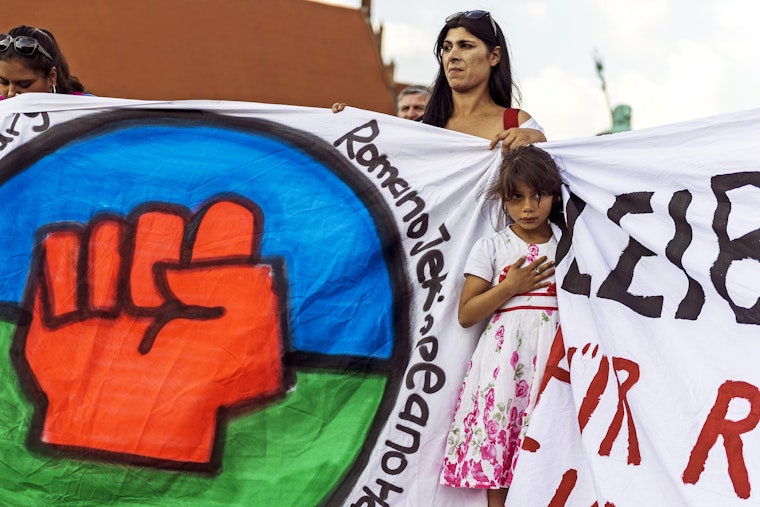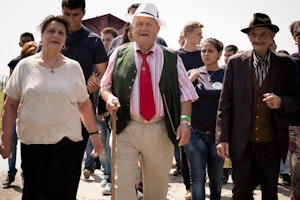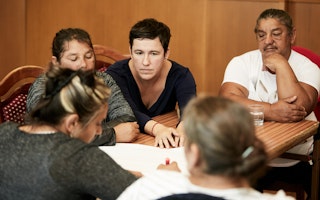How Pop Culture Can Help Roma See Themselves as Survivors
By Vicente Rodriguez Fernandez

For some young Roma activists, Holocaust commemorations can seem beside the point when Roma today face such urgent problems as unemployment, poverty, and segregation in housing and education.
At Ternype International Roma Youth Network, we believe that these two facets of Roma advocacy—the historical commemoration, and the work of improving the lives of Roma today—are inextricably linked. That’s because many of the Roma people’s current challenges are symptoms of a broader problem: Roma are treated as victims by authorities and much of European society.
This is why commemorations of the Roma Holocaust, and of Roma history in general, are an opportunity to connect with Roma youth across Europe, and shift their identity from victims to survivors.
Ternype played a fundamental role last year in getting the European Parliament to recognize August 2 as Roma Genocide Remembrance Day. Now, we need to use such commemorations to reclaim our own voice and our own history.
This week, in Auschwitz Birkenau and Krakow, Roma Holocaust survivors from Hungary, Romania, and France will meet with over 300 young Roma women and men to share their testimonies and discuss strategies to counter the growing xenophobia and nationalist populism in Europe. There are too many similarities between today’s political trends and the climate of hatred and fear that prevailed in the 1930s, which led to the extermination of 300,000 to 500,000 Roma people.
We believe Roma Holocaust survivors are best placed to draw lessons from this history, having stared down a Nazi regime determined to wipe them out of existence. A decade or two from now, the last of these brave souls will no longer be with us. We are counting on grassroots Roma activists to create a moral alliance between young people and survivors while there’s still time.
August 2 is an opportunity to ensure our governments recognize Roma history. There are still narratives about our own past that are silenced, misrepresented, or ignored. In my home country of Spain, I am struggling to have authorities acknowledge and issue public apologies for the fact that the Catholic Church and the Spanish Royal Crown organized an act of genocide against Spanish Roma on the nights of July 29 and 30, 1749, sending 10,000 Spanish Roma to prison and killing hundreds more in a shameful effort to preserve the nation’s so-called racial purity.
The persecution of Roma in Spain is a historical reality. Between 1492 and 1979, 2,500 anti-Roma laws were enacted in Spain, banning everything from the Romani language to traditional Romani clothes to marriages between Roma and non-Roma. I believe these facts should be researched by academics and taught to children in schools.
One effective way to engage young people on these topics is to reveal the surprising number of Roma references in American pop culture. Since I was a child, I have been passionate about comic books, many of which contain major characters of Romani origin. These characters, created from the 1940s through the 1960s—often by Jewish comic book writers, many of whom were persecuted themselves—played a huge role in my self-acceptance as a Roma person.
In one of the first comic books I read, X-Men Unlimited #2, I learned that Magneto’s real identity is Erik Lehnsherr, a German Sinto-Roma whose family was exterminated in Auschwitz. When the first X-Men movie came out in 2000, I convinced my family to come with me to the cinema so they could see a powerful Roma protagonist on the big screen. We were crestfallen to find that Magneto had been whitewashed by 20th Century Fox, scrubbed of any trace of his Roma heritage. Even in pop culture, we were denied our identity.
Currently, I am lobbying to recognize and make visible the Roma identities of key comic book characters in Hollywood adaptations. For instance, Doctor Doom, the villain who inspired George Lucas to create Darth Vader, is a Roma from Latveria—a fictional nation between Hungary, Romania, and Serbia—whose goal is to avenge the persecution of his people. Richard John “Dick” Grayson, the first incarnation of Batman’s sidekick Robin, is a Roma who knows how to speak Romanes, the language of Roma people. These features from comic books should be represented in movies.
The backgrounds of characters like these could change the way Roma youth view their identities in a positive and powerful way. These are not victims, but strong figures destined to leave their marks on the world. At the same time, European societies must provide these youth the space to make an impact by recognizing the history of Roma persecution and the contributions Roma have made to mainstream culture.
Roma history is far from irrelevant to our current challenges. Indeed, our history showcases our strength as a culture that has survived decades of relentless adversity, and is today poised to rise once again.
Vicente Rodriguez Fernandez is a Roma human rights activist, screenwriter, and cartoonist. He is a fellow of the Open Society Roma Initiatives Office.


